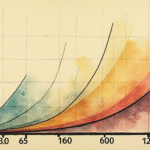Background on Key Figures
Xi Jinping is the current President of China, a position he has held since 2013. As one of the world’s most influential leaders, Xi has been instrumental in shaping China’s domestic and foreign policies. Donald Trump, the President of the United States from 2017 to 2021, has been known for his protectionist trade policies and strained relations with China.
The Telephone Call
On Thursday, Xi Jinping and Donald Trump held a telephone conversation, as reported by China’s state-run media outlet Xinhua. This call took place amidst heightened trade and diplomatic tensions between the two global powers.
Context of Tensions
The conversation comes at a time when both nations are accusing each other of jeopardizing the trade truce they negotiated last month in Switzerland. Trump, who has steered the United States towards a highly protectionist stance since his return to power in January, escalated tensions with China last week.
Trade Tensions Escalation
Trump accused China of not adhering to the terms of the trade truce negotiated in Geneva on May 12. Prior to this, the US and China had agreed to temporarily halt a tariff spiral that increased duties on American products to 125% and Chinese goods to 145%. Following two days of talks, Washington and Beijing agreed to reduce tariffs temporarily to 30% and 10%, respectively, pledging to continue negotiations towards a comprehensive trade agreement.
Key Questions and Answers
- Who are the main figures involved? The key figures in this situation are Xi Jinping, the President of China, and Donald Trump, the former President of the United States.
- What led to the recent tensions? Tensions escalated after Trump accused China of not adhering to the trade truce negotiated in Genebra on May 12. This followed a series of tariff increases that put American and Chinese products under heavy duties.
- What was the outcome of their telephone conversation? The content of their discussion remains undisclosed, but the call took place in an attempt to address and potentially resolve the ongoing trade tensions.
Impact on Global Trade
The strained relationship between China and the United States has significant implications for global trade. As two of the world’s largest economies, their actions can influence market trends, investment decisions, and international commerce. The current tensions have led to uncertainty in the global market, affecting businesses and consumers alike.
Historical Context of US-China Relations
The relationship between the United States and China has been marked by both cooperation and competition since the establishment of diplomatic ties in 1979. Over the years, trade imbalances, human rights concerns, and territorial disputes have strained their relationship. The recent trade tensions are part of this ongoing dynamic, reflecting each nation’s pursuit of economic interests and geopolitical influence.
Future Prospects
As both nations navigate these challenging times, the path forward remains uncertain. Continued dialogue and negotiation are crucial to resolving trade disputes and fostering a more stable relationship. The outcome of these efforts will not only affect the US and China but also have far-reaching implications for the global economy.






